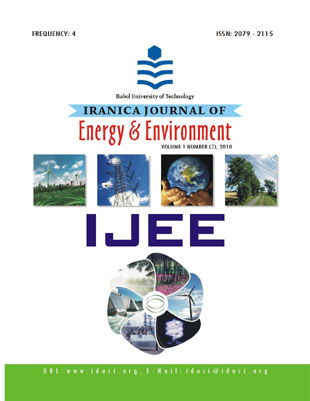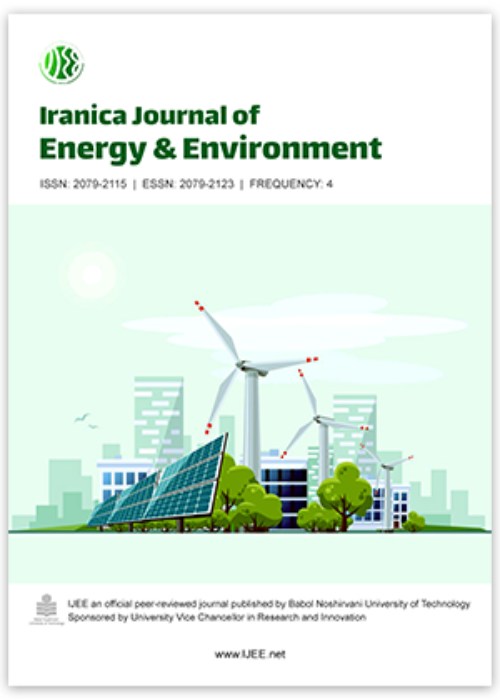فهرست مطالب

Iranica Journal of Energy & Environment
Volume:1 Issue: 2, Spring 2010
- تاریخ انتشار: 1388/10/11
- تعداد عناوین: 10
-
Page 1The Buriganga river system is located in the southern part of the north central region of Bangladesh, passing through west and south of Dhaka, the capital of Bangladesh. The river receives wastewater from numerous numbers of sources along its way, which are discharged as industrial effluents, municipal sewage, household wastes, clinical wastes and oils. The purpose of this study is to investigate into the impact of this wastewater on the river water and thus to provide an updated report on the state of water quality of the river Buriganga. The water samples were collected in year 2008-09 during both dry and wet seasons from different points along the river and analysed for various physiochemical quality parameters, which includes: temperature, pH, EC, DO, BOD, COD, PO -P, NH -N, Pb and Cr. The mean values for the parameters in both dry and wet 5 4 3 seasons were compared with the surface water quality standards as set by the Department of Environment (DOE) in Bangladesh. The water quality test results have also been summarised and presented through box and whisker plots.Keywords: Buriganga river % Water quality % Dry season % Wet season
-
Prediction of ß-carotene Solubility at Supercritical Conditions Using Regular Solutions TheoryPage 4
-
Page 8Membrane separation processes are of great and increasing importance in a number of industrial sectors, most notably the production of clean drinking water, treatment of wastewater, the food and dairy industries and the pharmaceutical and biotechnology sectors. Understanding of interactions between dissolved solute molecules and suspended colloidal particles with membranes used industrially is fundamental for developing strategies for the reduction of fouling of separation membranes. Fouling of membranes by forming a cake or thin film over the membranes results in a time dependant reduction in the operating efficiency of such membranes and can incur a number of economic costs, due to reduced transport, the requirement for pre-treatment and downtime to clean membranes. In this review we will outline the interaction forces which may occur in solution between suspended colloids and membrane surfaces.Keywords: Membranes % Colloids % Separation % Fouling % Interactive forces % Atomic force microscopy
-
Page 9Aqueous and Solvent extracts of leaves of S. torvum viz., Petroleum ether, Benzene, Chloroform, Methanol and Ethanol were tested in vitro for antimicrobial activity following the procedures of poisoned food technique and cup diffusion method against some important seed borne pathogens of paddy viz, Pyricularia oryzae, Alternaria alternata, Bipolaris oryzae, Tricoconis padwickii, Dreschlera tetramera, D. halodes, Curvularia lunata, F. oxysporum, F. moniliformae, F. solani and Xanthomonas oryzae. Aqueous extracts ofleaves (at 25% concentration) showed 100, 47.44, 60.47, 71.50, 56.11, 63.33, 78.62, 66.66, 47.44 and 46.27% inhibition of the test pathogens respectively. Highly significant antifungal activity was observed in Methanolic and ethanolic extract. The percentage inhibition of the test pathogenic fungi in Methanolic extract was 100% (P.oryzae), 74.42 (A. alternata), 65.68 (B oryzae), 87.62 (C. lunata), 100% (T. padwickii), 63.33 (D.halodes), 60.31 D. (tetramera), 76.01 (F.moniliformae), 59.21 (F. oxysporum), 43.91% (F.solani) and zone of inhibition of Xanthomonas campestris pv oryzae was 18 and 30mm in Methanol and ethanol extract.Keywords: Seed borne pathogens % Antimicrobial activity % Solanum torvum % Paddy


